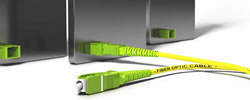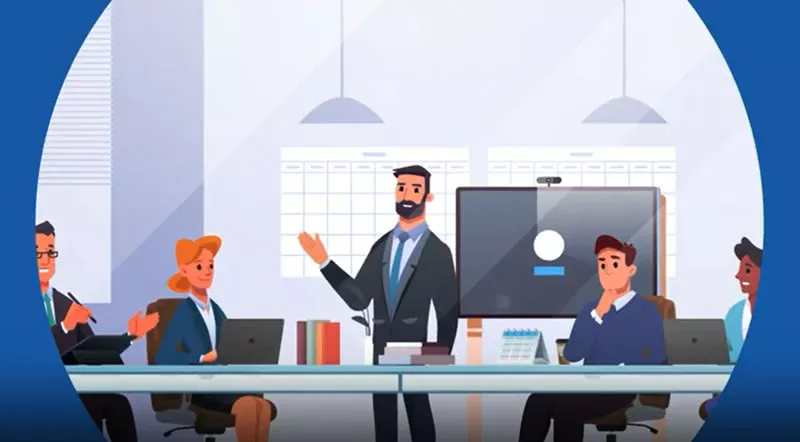What is DOCSIS/Euro DOCSIS Firmware and Why it is Important
February 2020
Initially developed by a conglomeration of telecommunication companies in 1997, Data Over Cable Service International Specification (DOCSIS) is an international standard that dictates data transmission over coaxial cable television networks. With DOCSIS, cable television operators can bundle internet services with their cable television products and offer them to their customers without any significant alteration to their network.
Over the years, DOCSIS has undergone several iterations, with each new iteration offering higher maximum upload and download speeds. The initial DOCSIS version, DOCSIS 1, had a maximum download speed of 40 Mbps and an upload speed of 10 Mbps. With the most recent iteration, DOCSIS 3.1, the maximum download and upload speeds have significantly increased to 10 Gbps and 1 Gbps respectively; with DOCSIS 3.1 full-duplex, both upload, as well as download maximum speeds, are at 10 Gbps. These speeds are expected to increase over time as more DOCSIS versions are developed.
DOCSIS VS. EURODOCSIS: WHAT'S THE DIFFERENCE
European cable television operators have different frequency allocation bandwidth plans than operators in the United States. American cable television operators have a frequency bandwidth of 6 MHz while their European counterparts have a frequency bandwidth of 8 MHz. This wider bandwidth allows European operators to offer higher downstream speeds to their customers than American cable operators. To accommodate the variation in bandwidth frequency, a variation of DOCSIS was developed for European cable television operators; this variant is known as EuroDOCSIS.
DOCSIS ARCHITECTURE
There are two principal components to DOCSIS; these are
- Cable modem: Familiar to most internet users, the cable modem is the piece of hardware located within the users' premises which allows for internet connectivity. There are different modems currently available, offering a variety of internet speeds as well as other additional features such as wireless, voice and router capabilities.
- Cable modem termination system (CMTS): The cable modem termination system is a hardware device located at the cable operator site that serves as a hub that regulates incoming traffic from and outgoing traffic to end-users. Depending on its size, the CMTS receives incoming traffic from hundreds or thousands of customers over multiple channels and routes it to the internet.
In addition to the physical components described above, DOCSIS also has Media Access Control (MAC) layer specifications. The MAC layer provides some form of organization and security to the data that is being transmitted as well as directs how internet traffic is routed. Every network device has a MAC address that controls where and when data is transmitted, and what data can be received by the network device. Newer CMTS technology includes CCAP features designed to decentralize the network components and evolve to Distributed Access Architecture (DAA). DAA will lead to decentralized fiber nodes with Remote PHY (R-PHY), Remote MAC-PHY and more.
WHY DOES DOCSIS MATTER
One of the major reasons that DOCSIS is important to customers is that it is a significant determinant of their internet performance. As earlier stated, there have been several DOCSIS iterations over the years, with each subsequent iteration offering improved performance speeds. To take advantage of these improved speeds, however, customers should use modems that utilize the most recent DOCSIS iteration; this means that only cable modems that are DOCSIS 3.0 or higher should be used today. Cable modems with DOCSIS less than 3.0 offer poor performance speeds and are considered to be end-of-life; customers using these modems should upgrade to more recent versions. DOCSIS also provides a single standard for the cable industry that is lacking in the non-cable telecom network.
WHY YOU NEED PROMPTLINK CABLE MODEM TESTING SOLUTIONS
At Promptlink, we offer a next-generation DOCSIS 3.1 CPE device testing tool, CPE ATLAS, that is designed to thoroughly analyze the performance of DOCSIS/EuroDOCSIS cable modems, while managing their firmware. Our platform is fully automated, easy to use, repeatable as well as reproducible, and with no need for specialized skills; testing can easily be performed by non-technical personnel. In addition to supporting all DOCSIS versions, our CPE ATLAS platform also performs parallel testing, this doubles and, in some instances, triples throughput over other products.
For more information about our testing platform, and to get started, contact us today.
What is Wi-Fi 7? The New, Faster Standard
Trends in Set-Top Box Deployments
How Network NoiseHawkAI Is Changing Network Monitoring
Deciding if Automated Testing is Right for Your Application
Using AI Technology to Automate Pinpointing Upstream Noise
Pandemic-Related Component Shortages and the Impact Across the Broadband Industry
What is Wi-Fi 6 and Why is It Important?
What is CPE and Why Does It Matter?
Rural Broadband and FCC Expansion Explained
The Challenges of Monitoring Upstream Noise in a Remote PHY Environment
Why Promptlink Automated STB Solution is Right for You
What is broadband network noise and why is it difficult to find?
How Do You Measure Network Health and Performance









